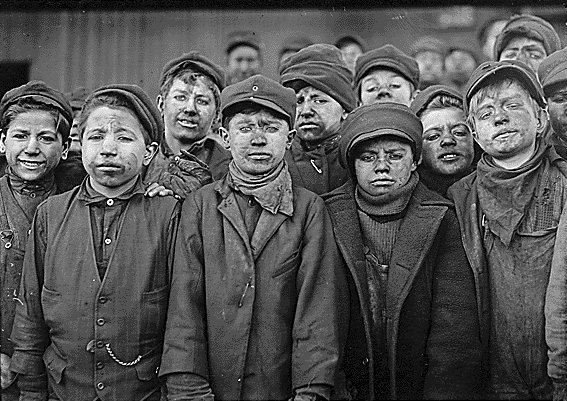Coal Mines in the Industrial Revolution
Coal mines in the Industrial Revolution were deeper than ever before. Before the 18th century, coal was mined from shallow mines. However, as the Industrial Revolution gained speed, demand for fuel rapidly increased.
Before the Industrial Revolution, there were two different types of mines: bell pits and drift mines. These were smaller mines that supplied local homes and industry.
But when industry became more and more important, there was a greater demand for coal, which as used as a fuel in steam engines and also for furnaces. The result of this was that coal mines grew deeper and became increasingly dangerous.
Some Coal shafts would extend hundreds of feet down into the ground. And then, once a coal seam had been discovered, miners would dig horizontally. But working conditions in these deep and narrow mines were terrible.

Problems included flooding and the presence of explosive gases (called fire damp). A spark, which could easily come from a miner’s axe or a candle could spell disaster. Underground pit collapses were also common as the mines were only supported by wooden props.
In 1841 about 216,000 people were employed in the mines in Britain. Most coal was mined in the north and the north-east as well as the Midlands and some parts of Scotland. Due to the difficulties of moving coal many towns and industries were established around the large coal mines.
How did coal production increase?
- 1700 : 2.7 million tonnes
- 1750 : 4.7 million tonnes
- 1800 : 10 million tonnes
- 1850 : 50 million tonnes
- 1900 : 250 million tonnes
Improving working conditions
The 19th century saw various developments in mining technology. In 1807, John Buddle came up with the invention of an air pump, which became widely used in mines. In 1815, Sir Humphrey Davy invented the “Davy Lamp”, a safety lamp that could be used in flammable environments. Its flame was designed to turn blue is gas was present in the mine.
Nevertheless, the mines were still a risky place to work.
For example, in one coal mine that has not been mined there were 349 deaths in just one year, 58 of which involved children under 14. Life for all those who worked underground was very hard.
As a result Parliament published a report in 1842 that examined the state of coal mining, which was called the Mines Report. The shocking report stated that some children under five years of age were working in the mines as trappers - they would work 12-hour days and only be paid two pennies a day; meanwhile some older girls developed deformities from carrying heavy baskets of coal.
There is the account of one girl - 11-year-old Ellison Jack - who told the Commission of Enquiry that every shift she would have to do 20 journeys pushing a tub which weighed over 200 kilos; if she showed signs of slacking, she claimed that she was whipped. Moreover, many children worked in water that came up to their thighs and pregnant women worked right up until the birth of their baby.
This report led to the Mines Act of 1842, which prohibited females and all boys under the age of 10 from working in the mines.
See also: Children in coal mines in the Nineteenth Century
MLA Citation/Reference
"Coal Mines in the Industrial Revolution". HistoryLearning.com. 2024. Web.
